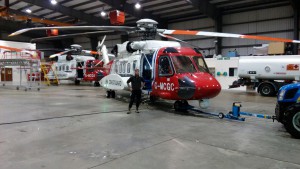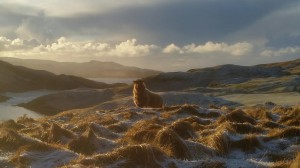For the second part of my elective, I was doing General Practice in Unst and Lerwick Health Centres in the Shetland Islands, Scotland.
For those that have no idea where the Shetland Islands are. They are 170km north of mainland Scotland. They are an archipelago of islands in the North Sea. The main industries are fishing, oil, agriculture and tourism. Medicine in Shetland is, like back home, based predominantly around general practice. There is one base hospital based in Lerwick. Gilbert Bain Hospital is a small secondary hospital with four surgical consultants and four medical consultants, a couple of anaesthetists and a handful of house officers. Along with the nurses and the allied health team, the whole hospital is run smoothly. The A and E department is run by house officers, one surgical and one medical who call in the on-call consultant based in the hospital if needed.
Most tertiary medicine gets referred to Aberdeen Royal Infirmary on the mainland of Scotland. So, there is a lot of NHS health funding spend on transport. Most patients go on the 1-hour flight to Aberdeen in commercial airplanes, although those patients that are critically ill get transported by air ambulance or a 12-hour ferry if they cannot be exposed to the changes in air pressure found in airplanes, also if air traffic is grounded due to bad weather, which happens very frequently.
My Experience:
I spent a month in Shetland and for my first week I was on the most northerly inhabited island called Unst. Here I spent time in the Unst Health Centre and worked closely with the local GP, the practice nurse and the district nurses. The island only has around 700 inhabitants, so the practice had a very relaxed and laid-back feel as it did not have the pressures of an urban practice with thousands of patients on their books. The GP even able to get out and do home visits most afternoons to see those with reduced mobility.
I stayed with an amazing lady named Jane in her home which is called Little Hamar. (Hamar meaning peninsula or outcrop.) All the houses in Shetland outside the towns have names as none of the roads are named. A lot of the time with the District nurse was spent finding houses with obscure names. One man lived in a house called Skaw, the directions on his file were. “Turn left from the health centre drive to Haroldswick, take the second left, drive past Glen Manor, right at Grand Innes, go past the Gin distillery and it’s the 4th house on the left with the red door.” Who needs road names and house numbers ae?
Shetland and Unst, in particular, have a very long history and a long connection with Scandinavia and many people here have Norse ancestry. There are ruins and historical buildings throughout the islands. In fact, about 400m from Janes house on the side of the hill there is the excavated ruins of a 20-meter-long Viking longhouse which has been carbon dated to the 9th century.
After my week in Unst, I spent the rest of my time at the Lerwick Health Centre in Lerwick the capital of Shetland. This town has a population of around 6000 and is the largest township in the islands. Although small on an international scale, after coming from Unst it seemed like a metropolis. They have recently put in their first set of traffic lights. Much to the frustration of the locals. One morning I overheard this conversation in the waiting room. “There were 4 cars in front of me at that new set of lights the other day, what’s this place coming to?” Aye, I keen (Shetland for, know) the place is going to the dogs.”
During my time in Shetland, I spent a lot of time with the GP’s. Because of the fluidity of my elective I also spent time with the district nurses, the local paramedics, a couple of days in the Emergency department of the Gilbert Bain hospital and my favourite, a fantastic day with the Coastguard, checking out their state of the art helicopter retrieval service. Working in retrieval medicine is a dream of mine so this was a brilliant view of what my future may hold.



No comments yet.
Leave a comment